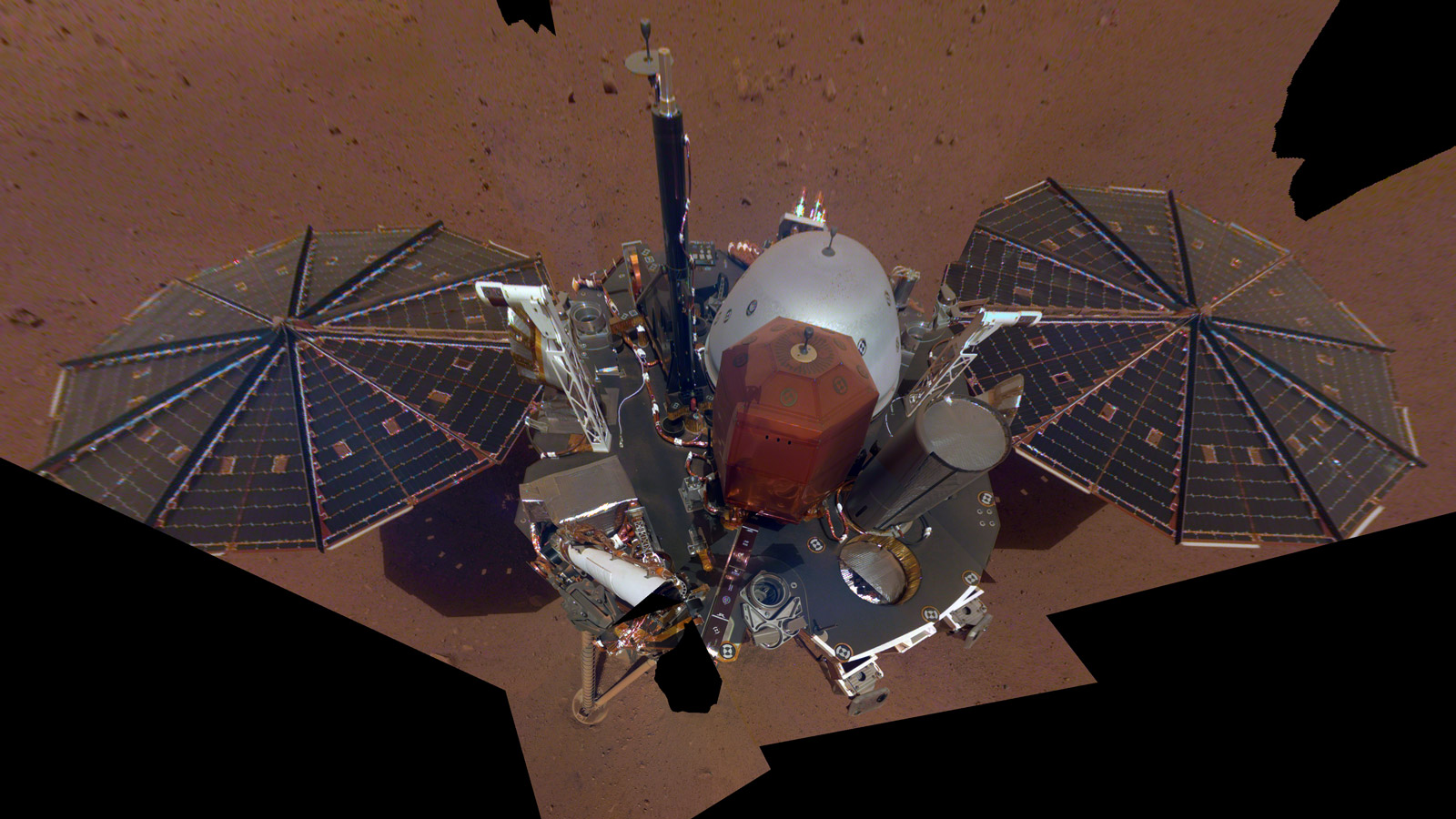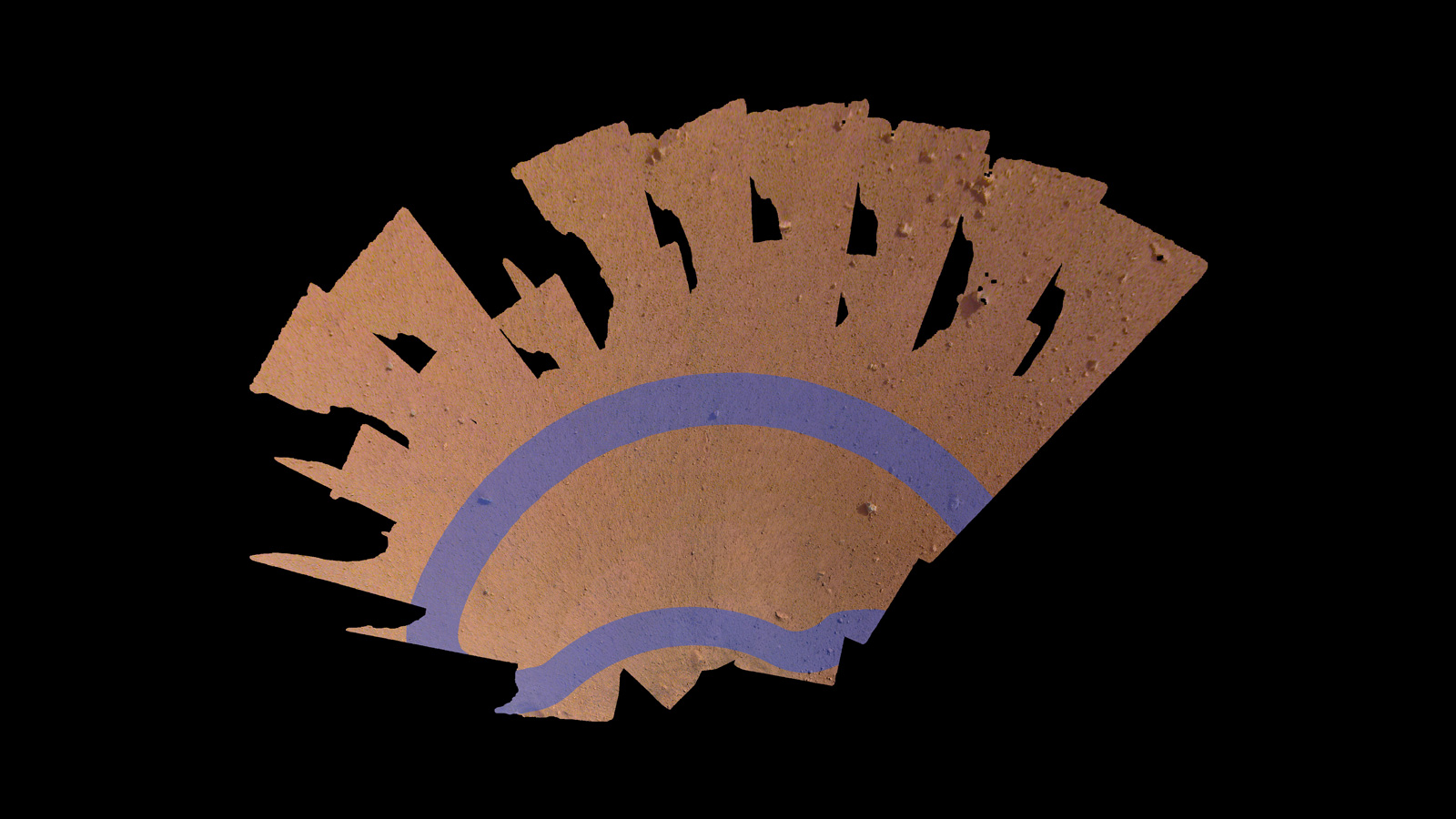NASA's New Mars Lander Takes 1st Selfie, Scopes Out Workspace

NASA's new Mars lander has snapped its first selfie on the Red Planet.
The InSight spacecraft, which touched down on the flat equatorial plain Elysium Planitia on Nov. 26, took the selfie using the camera on its 5.9-foot-long (1.8 meters) robotic arm. The photo is a composite made up of 11 separate images, NASA officials said.
"This is the same imaging process used by NASA's Curiosity rover mission, in which many overlapping pictures are taken and later stitched together," the officials wrote in a statement describing the image, which was released today (Dec. 11). "Visible in the selfie are the lander's solar panel and its entire deck, including its science instruments." [NASA's InSight Mars Lander: Amazing Landing Day Photos!]
Those instruments include a self-burrowing heat probe and a suite of incredibly sensitive seismometers, both of which must be placed directly on the red dirt by InSight's arm. Such a maneuver has never been performed before; all previous Mars robots have toted their scientific gear on their bodies and/or arms.
It's crucial for InSight to get the placement right, so mission team members have been carefully characterizing the red dirt at the lander's feet. And there's good news in this regard: The workspace looks very accommodating, as yet more newly released InSight imagery shows.

"The near-absence of rocks, hills and holes means it'll be extremely safe for our instruments," InSight Principal Investigator Bruce Banerdt, of NASA's Jet Propulsion Laboratory in Pasadena, California, said in the same statement. "This might seem like a pretty plain piece of ground if it weren't on Mars, but we're glad to see that."
Indeed, it appears that InSight landed inside an impact crater that later filled with sand, NASA officials said. The soft ground should ease the digging for the heat probe, which was designed to get between 10 feet and 16 feet (3 to 5 meters) underground.
Get the Space.com Newsletter
Breaking space news, the latest updates on rocket launches, skywatching events and more!
The workspace photo is also a composite, which combines 52 individual images, NASA officials said.
The $850 million InSight mission launched in May, along with two fly-along cubesats named MarCO-A and MarCO-B. The latter two craft became the first cubesats ever to explore interplanetary space, and they also beamed home data from InSight during the lander's touchdown on Nov. 26.
InSight's main goal is to map the interior of Mars in unprecedented detail, helping scientists better understand the planet's composition and structure. Such information should shed light on the formation of rocky planets in general, NASA officials have said.
Just after touchdown, mission team members said they likely wouldn't be ready to deploy the heat probe and the seismometer suite until January or February. The InSight mission is scheduled to last one Mars year, which is nearly two Earth years.
Mike Wall's book about the search for alien life, "Out There" (Grand Central Publishing, 2018; illustrated by Karl Tate) is out now. Follow him on Twitter @michaeldwall. Follow us @Spacedotcom or Facebook. Originally published on Space.com.
Join our Space Forums to keep talking space on the latest missions, night sky and more! And if you have a news tip, correction or comment, let us know at: community@space.com.

Michael Wall is a Senior Space Writer with Space.com and joined the team in 2010. He primarily covers exoplanets, spaceflight and military space, but has been known to dabble in the space art beat. His book about the search for alien life, "Out There," was published on Nov. 13, 2018. Before becoming a science writer, Michael worked as a herpetologist and wildlife biologist. He has a Ph.D. in evolutionary biology from the University of Sydney, Australia, a bachelor's degree from the University of Arizona, and a graduate certificate in science writing from the University of California, Santa Cruz. To find out what his latest project is, you can follow Michael on Twitter.









